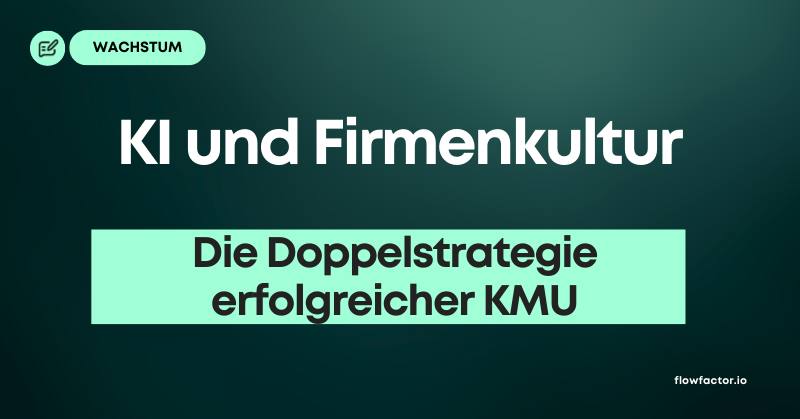Over the past few weeks, I have spoken to numerous companies that are introducing AI technologies. I have noticed a clear pattern: The most successful of them are pursuing a dual strategy - they are investing in technology AND corporate culture.
The technology-culture gap
The figures speak for themselves: while 82% of SMEs in German-speaking countries are investing in AI technologies, only 31% report successful integration into their daily work. This discrepancy is rarely due to technological reasons - but cultural ones.
An example: A medium-sized financial services provider implemented a state-of-the-art AI system for credit assessment. Despite its technical excellence, the system was hardly used. The reason? The employees did not understand how the AI arrived at its decisions and were afraid of having to take responsibility for wrong decisions.
The dual strategy of successful SMEs
Companies that invest in both technology and culture are proven to achieve better results. Here are the five core elements of a successful dual strategy:
1. create a technological basis
Successful SMEs start with a solid Data strategy. They understand that AI can only be as good as the data on which it is based. You invest in:
- Data quality and governance
- Scalable AI infrastructure
- User-friendly tools with a low barrier to entry
- Clear use cases with measurable business value
A mechanical engineering company from Switzerland, for example, invested several months in cleansing and structuring its data before starting to implement AI - and was then able to show initial results within just a few weeks.
2. create cultural conditions
Successful companies are developing an AI-friendly culture alongside the technological foundation. Central elements are:
- Psychological safety: Space for open discussions about fears and concerns
- Learning culture: Continuous training and a willingness to experiment
- Transparent communication: Clear information about objectives and effects
- Collaborative decision making: Involving employees in the selection and implementation process
A retail company from Munich introduced informal AI meetings where employees could ask questions and express concerns. Acceptance of the new tools increased by 64% within three months.
3. position managers as role models
In companies where managers actively use AI tools and share their experiences, the adoption rate is 76% higher. Successful SMEs:
- Schools Managers first in new technologies
- Encourage open interaction with learning curves and errors
- Create incentives for the use and further development of AI solutions
- Measuring and communicating progress transparent
4. redefine and value human strengths
Successful companies clearly define which tasks AI takes on and where human skills remain indispensable. You:
- Identify and promote complementary human skills such as Creativity, empathy and critical thinking
- Create New roles at the interface between humans and AI
- Develop career paths that Cooperation with AI Reward
- Emphasize the added value human expertise
5. measure, share and celebrate successes
Part of the dual strategy can also be to measure cultural factors in addition to technological KPIs, such as:
- Acceptance and usage rate of AI tools
- Goodwill
- Innovation rate and idea generation
- Cooperation between teams
The international comparison
While 58% of companies in the USA already have so-called "Culture & AI Integration Teams", there are only 19% in German-speaking countries. There is some catching up to do here.
It is also interesting to note in this context that international studies show that SMEs are often more agile and successful in integrating AI and culture than large companies. Their flatter hierarchies and shorter decision-making paths enable faster adjustments and a more pragmatic approach.
My conclusion
It is becoming increasingly important to consider the "soft" cultural factors as well as the technology when it comes to digitalization. SMEs have the opportunity not only to catch up through this dual strategy, but also to take on a pioneering role internationally.
The question is no longer WHETHER AI will change your company, but HOW you will shape this change.
👉 Download a summary of the most important points on AI and corporate culture here:



